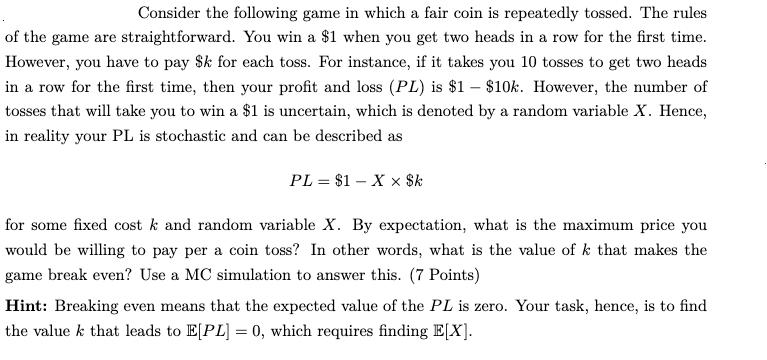Answered step by step
Verified Expert Solution
Question
1 Approved Answer
Consider the following game in which a fair coin is repeatedly tossed. The rules of the game are straightforward. You win a $1 when

Consider the following game in which a fair coin is repeatedly tossed. The rules of the game are straightforward. You win a $1 when you get two heads in a row for the first time. However, you have to pay $k for each toss. For instance, if it takes you 10 tosses to get two heads in a row for the first time, then your profit and loss (PL) is $1$10k. However, the number of tosses that will take you to win a $1 is uncertain, which is denoted by a random variable X. Hence, in reality your PL is stochastic and can be described as PL = $1 X x $k for some fixed cost k and random variable X. By expectation, what is the maximum price you would be willing to pay per a coin toss? In other words, what is the value of k that makes the game break even? Use a MC simulation to answer this. (7 Points) Hint: Breaking even means that the expected value of the PL is zero. Your task, hence, is to find the value k that leads to E[PL] = 0, which requires finding E[X].
Step by Step Solution
★★★★★
3.48 Rating (158 Votes )
There are 3 Steps involved in it
Step: 1
To find the value of k that makes the game break even we need to find the expected value of the PL a...
Get Instant Access to Expert-Tailored Solutions
See step-by-step solutions with expert insights and AI powered tools for academic success
Step: 2

Step: 3

Ace Your Homework with AI
Get the answers you need in no time with our AI-driven, step-by-step assistance
Get Started


